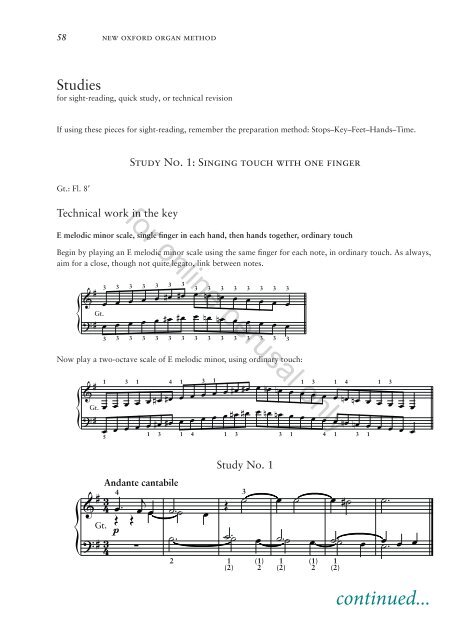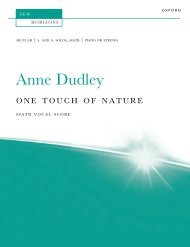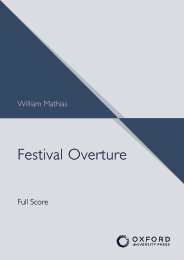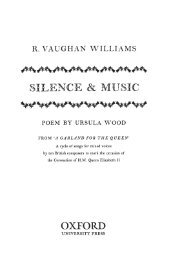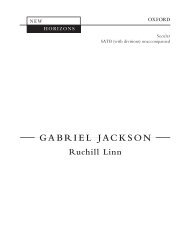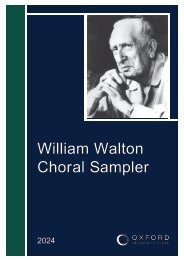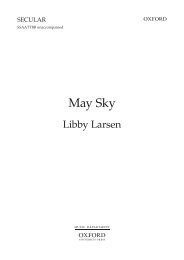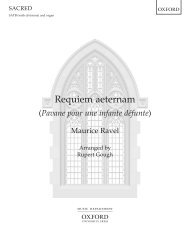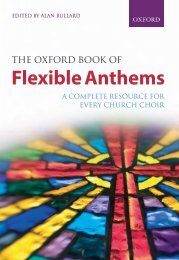New Oxford Organ Method
A single piece of repertoire is the primary focus for each chapter, with preparatory exercises providing the necessary technical work building towards the piece. Each lesson covers four main topics, which are systematically developed: practice methods, registration, fingering and pedalling, and historically-informed interpretation. The method is for keyboard players of any age who are establishing first steps at the organ with or without a teacher. It will also serve more experienced organists who want to improve their technique.
A single piece of repertoire is the primary focus for each chapter, with preparatory exercises providing the necessary technical work building towards the piece. Each lesson covers four main topics, which are systematically developed: practice methods, registration, fingering and pedalling, and historically-informed interpretation. The method is for keyboard players of any age who are establishing first steps at the organ with or without a teacher. It will also serve more experienced organists who want to improve their technique.
- No tags were found...
Create successful ePaper yourself
Turn your PDF publications into a flip-book with our unique Google optimized e-Paper software.
58 new oxford organ method<br />
Studies<br />
for sight-reading, quick study, or technical revision<br />
If using these pieces for sight-reading, remember the preparation method: Stops–Key–Feet–Hands–Time.<br />
Study No. 1: Singing touch with one finger<br />
Gt.: Fl. 8ʹ<br />
Technical work in the key<br />
for online perusal only<br />
E melodic minor scale, single finger in each hand, then hands together, ordinary touch<br />
Begin by playing an E melodic minor scale using the same finger for each note, in ordinary touch. As always,<br />
aim for a close, though not quite legato, link between notes.<br />
{ &# œ œ œ œ œ # œ # œ œ nœ<br />
Gt.<br />
?# œ œ œ œ œ # œ # œ œ nœ<br />
3 3 3 3 3 3 3<br />
3 3 3 3 3 3 3 3<br />
3 3 3 3 3 3 3 3 3 3 3 3 3 3 3<br />
Now play a two-octave scale of E melodic minor, using ordinary touch:<br />
nœ<br />
nœ<br />
œ œ œ œ œ<br />
œ œ œ œ œ<br />
{ &#<br />
?#<br />
Gt.<br />
œ œ œ œ œ # œ # œ œ œ œ œ œ # œ # œ œ nœ<br />
œ œ œ œ œ # œ # œ œ œ œ œ œ # œ # œ œ nœ<br />
1 3 1 4 1 3 1 1 3 1 4 1 3<br />
5<br />
1 3 1 4 1 3 3 1 4 1 3 1<br />
nœ<br />
nœ<br />
œ œ œ œ œ nœ<br />
nœ<br />
œ œ œ œ œ nœ<br />
nœ<br />
œ œ œ œ œ<br />
œ œ œ œ œ<br />
{<br />
Œ<br />
p<br />
4 3<br />
Andante cantabile<br />
Study No. 1<br />
3<br />
& # 4 3<br />
4 œ<br />
Œ œj œ ˙˙<br />
Œ ˙ œ ˙ œ # ˙ ˙<br />
œ<br />
Gt.<br />
?# ˙ ˙˙ œ ˙˙<br />
∑<br />
œ ˙˙ œ œ˙ œ œ<br />
2 1 (1)<br />
(2) 2<br />
1<br />
(2)<br />
(1)<br />
2<br />
1<br />
(2)<br />
continued...


